Instapage Vs ClickFunnels 2024: Which is The Better Platform?
Introduction:
This article will explore an essential question for serious entrepreneurs looking to grow their business: Instapage vs Clickfunnels – Which is best for my business? In digital marketing, sales funnels and landing pages are powerful tools that drive conversions and maximize revenue. A sales funnel tool is a sequential process that guides potential customers through the buyer’s journey, from awareness to purchase. It enables businesses to nurture leads, build relationships, and convert prospects into paying customers.
On the other hand, a landing page is a web page specifically designed to capture visitors’ attention and encourage them to take a specific action, such as making a purchase, subscribing to a newsletter, or filling out lead capture forms to collect emails. It is the entry point for users who click on an advertisement, search engine result, or promotional link.
Regarding building effective sales funnels and landing pages, ClickFunnels and Instapage are popular platforms that have gained significant traction among marketers. Both platforms provide tools and features to accelerate and optimize the funnel and landing page-building process.
Key Takeaways:
The better platform for your business between Instapage and ClickFunnels will depend on your specific needs and goals:
Comparison: Instapage Vs ClickFunnels:
| Features | Instapage | ClickFunnels |
| Price | $299/mo | Starts @$147/mo |
| Domains | Unlimited | 1 |
| Sales Funnel |                                  |                                                                                        |
| Landing Page Builder |                                                                                        |                                                                                        |
| Courses |                                  | Unlimited |
| Blogs |                                  |                                                                                        |
| Email Marketing | 3rd party integration w/ added cost |                                                                                        |
| Automation rules |                                  |                                                                                        |
| Workflows |                                  |                                                                                        |
| A/B Tests |                                                                                        |                                                                                        |
| Tags |                                  |                                                                                        |
| 1-Click upsells |                                  |                                                                                        |
| Website builder |                                  |                                                                                        |
| Follow-up funnels |                                  |                                                                                        |
| Email list builder |                                  |                                                                                        |
| Run own affiliate program |                                  | Starts @$297/mo |
| Share Funnels |                                  |                                                                                        |
| AMP landing pages |                                                                                        |                                  |
| AI content |                                                                                        |                                  |
| Heatmaps |                                                                                        |                                  |
| Drop-In Pixel |                                                                                        |                                  |
| Collaboration tools |                                                                                        |                                  |
| Personalization |                                                                                        |                                  |
| Thor Render Engine |                                                                                        |                                  |
| Post-Click score |                                                                                        |                                  |
| Global Blocks |                                                                                        |                                  |
| Coupon codes |                                  |                                                                                        |
| 7 days a week support |                                                                                        |                                                                                        |
| Trustpilot Ratings1 | 2.6/5 (387 reviews) | 4.5/5 (2,113 reviews) |
Overview Of Instapage And Clickfunnels:
Instapage is a popular landing page software builder platform that empowers businesses to create high-converting landing pages and optimize their marketing campaigns. Founded in 2012, Instapage has gained recognition for its user-friendly interface and robust features designed to enhance conversion rates.


ClickFunnels, founded by Russell Brunson in 2014, is a comprehensive sales funnel builder platform that has gained immense popularity among entrepreneurs and marketers. This software tool is known for its intuitive drag-and-drop interface and an all-in-one solution for creating, optimizing, and launching sales funnels.
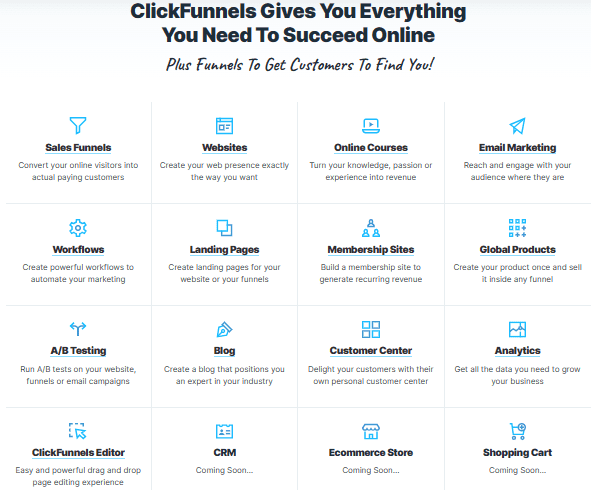

Comparison Of Key Features: Instapage Vs ClickFunnels
Landing Page Builder/Sales Funnel Builder:
Instapage is a sophisticated landing page builder with several features that will assist you in creating high-converting landing pages. Some of the key capabilities of the Instapage landing page builder include:
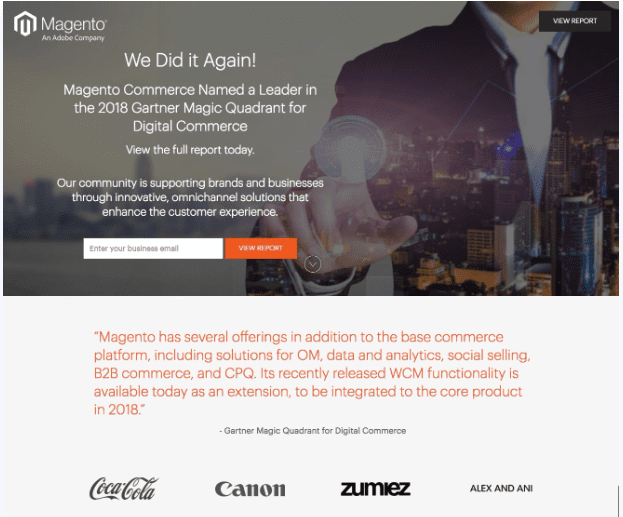

Source: Instapage
ClickFunnels is a marketing tool that allows you to construct, manage, and track your sales funnel from beginning to end. Some of the key capabilities of the ClickFunnels sales funnel builder include:
In this section of our Instapage vs ClickFunnels review, we learned that the main focus of Instapage is building and optimizing landing pages. On the other hand, the core concentration of ClickFunnels is creating sales funnels.
Ease of Use:
From my experience, Instapage is more straightforward to use than ClickFunnels. It isa more user-friendly drag-and-drop editor, which can make it easier for newcomers. Additionally, Instapage provides more marketing platform integrations, which can make it simpler to monitor the effectiveness of your landing pages and improve their conversion rates.
While ClickFunnels has a more significant number of features than Instapage, it is also more complicated. ClickFunnels is an excellent option if you require a tool that can be used to build email marketing campaigns and sales funnels. However, if you are unfamiliar with marketing jargon, it may be more challenging to understand how to use it.
Your needs and experience level will ultimately determine the best tool for you. Instapage is a smart choice if you’re starting. ClickFunnels is a great option if you are more skilled and require a tool that can be used to develop sales funnels and email marketing campaigns.
A/B Testing And Analytics:
Instapage provides more precise A/B testing capabilities. The headline, the CTA button, the copy, and the graphics are some variables you can test with your landing pages. Additionally, Instapage dynamically allocates traffic with AI experiments, a tool that automatically directs more visitors to the version of your landing page that is doing the best.


ClickFunnels has an easier A/B testing UI. A/B test setup is also more straightforward in ClickFunnels. However, compared to Instapage, ClickFunnels provides fewer tools for precise A/B testing.
Finally, your unique requirements and preferences will determine your ideal A/B testing tool. Instapage is a good alternative if you need a tool that allows for granular A/B testing. ClickFunnels is a good choice if you want a straightforward A/B testing platform that is simple to set up.
Integrations:
When selecting a landing page or sales funnel builder, the ability to integrate with third-party services is critical. According to my study, Instapage is designed to integrate with 3rd-party systems, whereas ClickFunnels has a limited number of 3rd-party integrations. This implies that if you’re searching for a platform with a diverse set of integrations with other products and services, Instapage might be a better fit.
Instapage connects to a number of third-party platforms, including Google Analytics, Facebook Ads, Salesforce, Marketo, and others. This enables you to simply integrate your landing pages with other products and services in order to streamline your marketing activities.
ClickFunnels interfaces with a number of third-party systems to help you streamline your marketing activities. Email marketing services like ActiveCampaign, AWeber, and MailChimp, payment gateways like Stripe and PayPal, and webinar platforms like GoToWebinar and Zoom are among the systems with which ClickFunnels integrates.
Analytics And Tracking Capabilities:
Both Instapage and ClickFunnels provide analytics and monitoring tools to help you track the performance of your landing pages and sales funnels.
For tracking results, Instapage delivers granular data such as heatmaps, conversion rates, and visitor behavior. This gives you vital insights into how visitors interact with your landing pages and allows you to make data-driven decisions to increase conversion rates.
ClickFunnels has analytics and tracking features, although they are not as sophisticated as those provided by Instapage. ClickFunnels tracks basic metrics such as page views, opt-ins, and revenues.
Instapage and ClickFunnels provide analytics and monitoring tools to assist you analyze the performance of your landing pages and sales funnels. Instapage, on the other hand, has more advanced analytics features than ClickFunnels.
Email Marketing:
Neither Instapage nor ClickFunnels are primarily used for email marketing. Both platforms, however, provide some email marketing features.
Actionetics, a built-in email autoresponder in ClickFunnels, allowing you to send automatic emails to your leads and customers. You may utilize Actionetics to generate email sequences, send out broadcast emails, and set up triggers based on user behavior. It’s worth noting, though, that Actionetics is only available on the more expensive ClickFunnels plan.
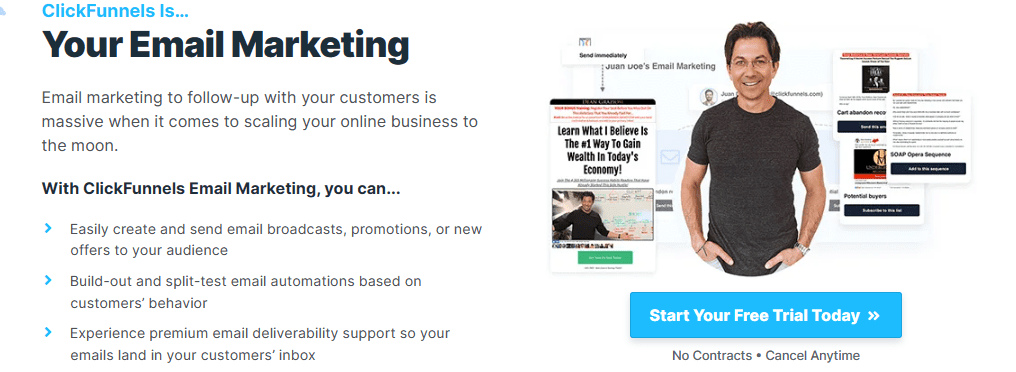

Instapage, on the other hand, does not include an email marketing tool. Instead, it interfaces with a number of third-party email marketing platforms, including MailChimp, Campaign Monitor, and GetResponse. This means you can use Instapage to construct landing pages, gather leads, and then utilize a third-party email marketing software to send automated emails to your leads.
While both Instapage and ClickFunnels include some email marketing functionality, they are not primarily email marketing systems. ClickFunnels has an email autoresponder, whereas Instapage interfaces with third-party email marketing tools. It’s always a good idea to examine your individual needs and select the platform that best fulfills them.
Templates:
Instapage and ClickFunnels offer a variety of templates to help you quickly create high-converting landing pages and sales funnels. However, there are some differences between the templates offered by the two platforms.
Instapage offers over 500 customizable, mobile-responsive templates that are designed to increase conversions for many industry-based use cases. These templates are organized into categories such as lead generation, webinar, ebook, and app download, making it easy to find a template that fits your needs.
ClickFunnels also offers a variety of templates, but the number of templates available is not as large as Instapage. ClickFunnels templates are designed to be used for specific types of funnels, such as opt-in funnels, sales funnels, and webinar funnels. This makes it easy to find a template that fits your specific funnel needs.
Instapage and ClickFunnels offer a variety of templates to help you create high-converting landing pages and sales funnels. Instapage offers a larger number of templates compared to ClickFunnels, while ClickFunnels templates are organized by funnel type.
Automation:
Instapage and ClickFunnels both provide automation features that can help you automate your marketing activities and increase conversion rates. However, there are some distinctions between the two platforms’ automation capabilities.
Automation tools available from ClickFunnels include email autoresponders, one-click upsells and downsells, and funnel automation. You can set up automated email sequences, trigger events depending on user activity, and automate many components of your sales funnel with ClickFunnels.
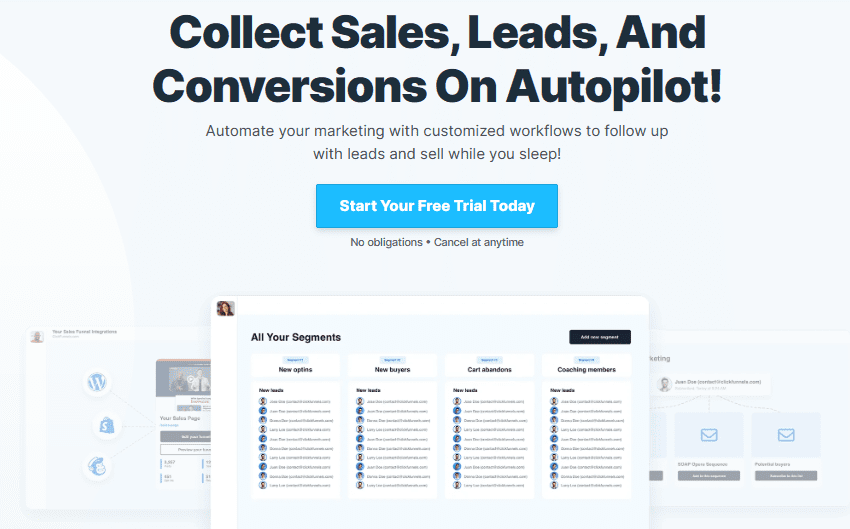

Instapage, on the other hand, focuses on automating the creation and optimization of landing pages. Instapage allows you to personalize landing pages based on user data, set up A/B tests to automatically optimize your pages, and use heatmaps to obtain insights into user behavior.
Instapage and ClickFunnels include automation features to assist you in streamlining your marketing activities. ClickFunnels focuses on sales funnel automation, whereas Instapage focuses on landing page building and optimization.
Customization:
Instapage and ClickFunnels both allow you to customize your landing pages and sales funnels to meet your individual requirements. However, the customization capabilities of the two platforms differ slightly.
Instapage has a powerful drag-and-drop editor that makes it simple to add, move, and update page items. Instablocks can also be used to build reusable content blocks that can be rapidly added to your pages. Instapage also includes advanced design tools like custom code editing, dynamic text replacement, and global blocks, which allow you to make changes to numerous pages at once.
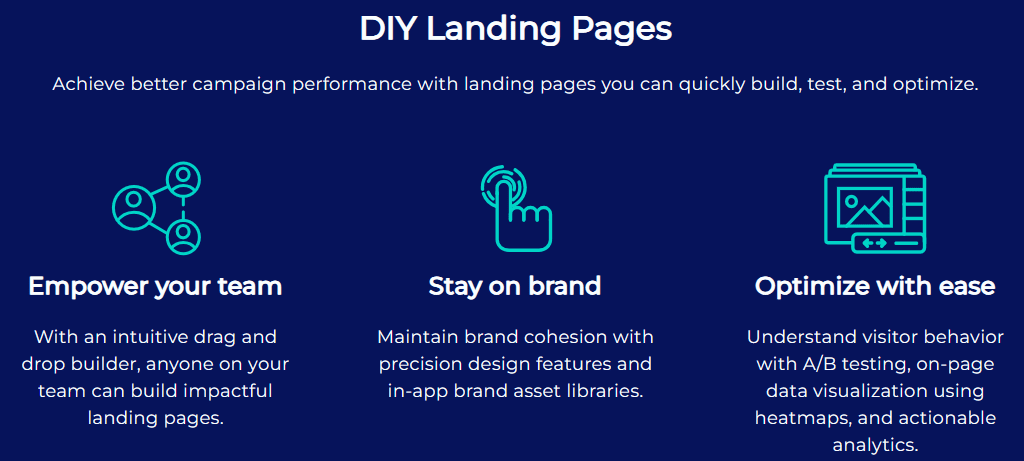

For customizing your pages, ClickFunnels also has a drag-and-drop editor, but it is not as powerful as the Instapage editor. Custom CSS and HTML are available through ClickFunnels, but they take some technical knowledge to employ.
Instapage and ClickFunnels provide customization tools to help you construct landing pages and sales funnels that are tailored to your individual requirements. Instapage, on the other hand, has more advanced customization options than ClickFunnels.
Customer Support:
Instapage and ClickFunnels both provide customer service to assist users with any problems they may have while using the platform. However, there are some distinctions between the two platforms’ customer assistance.
Instapage provides customer service via a number of channels, including email, live chat, and phone assistance. The software also features an extensive knowledge base with articles and tutorials to assist users in learning how to utilize the platform.
ClickFunnels also provides email and live chat customer care, as well as a Facebook group where users can ask questions and obtain help from other ClickFunnels users. ClickFunnels also features a knowledge base filled with articles and tutorials to assist users in learning how to utilize the platform.
Use Cases And Target Audience:
Instapage Use Cases/Target Audience:
Use Cases:
Target Audience:
ClickFunnels Use Cases/Target Audience:
Use Cases:
Target Audience:
Although there may be some overlap in the target audience, ClickFunnels focuses on providing a comprehensive funnel-building solution. In contrast, Instapage focuses on providing a robust landing page builder with optimization features.
What are the Instapage built-in capabilities that ClickFunnels does not have?
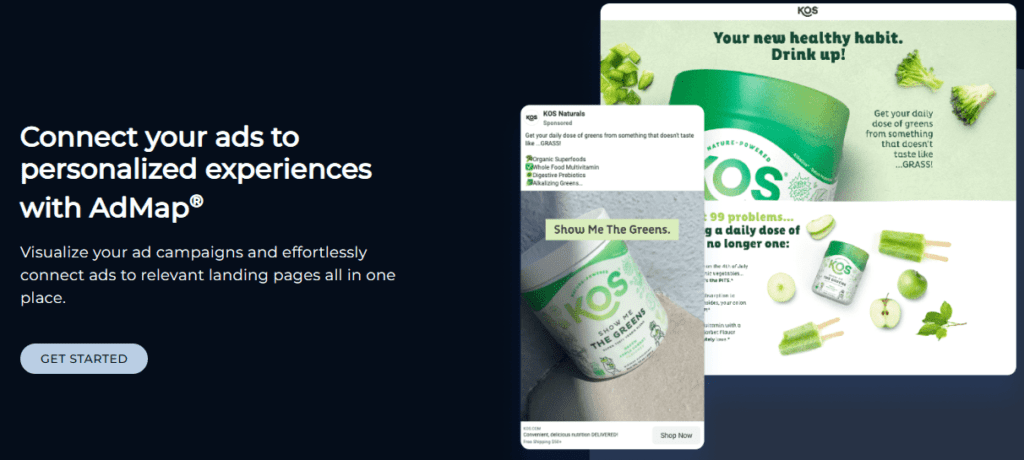

What are the built-in features of ClickFunnels that Instapage lacks?
Pricing Plans:
Instapage
| Features | Build | Convert |
| Price | $299/mo | Customized |
| Landing page builder |                                                                                        |                                                                                        |
| No conversion limits |                                                                                        |                                                                                        |
| Unlimited domains |                                                                                        |                                                                                        |
| A/B Testing |                                                                                        |                                                                                        |
| AI Content |                                                                                        |                                                                                        |
| GDPR Compliance |                                                                                        |                                                                                        |
| Instablocks |                                                                                        |                                                                                        |
| AMP Pages |                                                                                        |                                                                                        |
| Thor render engine |                                                                                        |                                                                                        |
| AdMaps |                                                                                        |                                                                                        |
| Dynamic text replacement |                                                                                        |                                                                                        |
| SSL encryption |                                                                                        |                                                                                        |
| GDPR compliance |                                                                                        |                                                                                        |
| Google SSO |                                                                                        |                                                                                        |
| Zapier integration |                                                                                        |                                                                                        |
| Marketo integration |                                                                                        |                                                                                        |
| Multi-step forms |                                                                                        |                                                                                        |
| Invisible reCAPTCHA |                                                                                        |                                                                                        |
| AI experiments |                                  |                                                                                        |
| Editable Global Blocks |                                  |                                                                                        |
| Ad to Page Personalization |                                  |                                                                                        |
| Heatmaps |                                  |                                                                                        |
| Workspace scripts |                                  |                                                                                        |
| Custom fonts |                                  |                                                                                        |
| SSO |                                  |                                                                                        |
| Audit logs |                                  |                                                                                        |
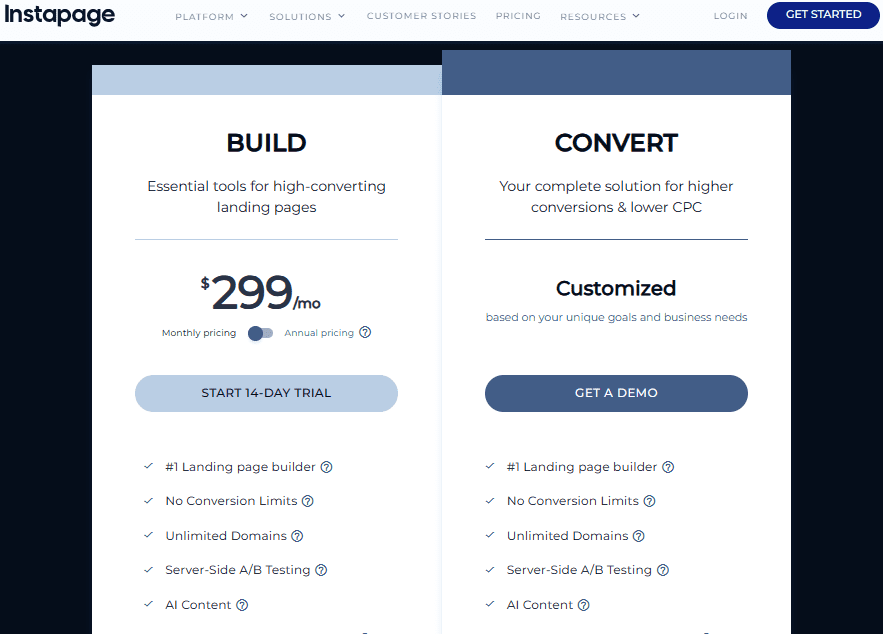

ClickFunnels Pricing Plans:
| Features | Basic | Pro | Funnel Hacker |
| Price | $147/mo | $197/mo | $297/mo |
| Website | 1 | 1 | 3 |
| Users | 3 | 5 | 15 |
| Domain | 1 | 3 | 9 |
| Contacts | 10,000 | 25,000 | 200,000 |
| Courses | Unlimited | Unlimited | Unlimited |
| Workflows | Unlimited | Unlimited | Unlimited |
| Pages | Unlimited | Unlimited | Unlimited |
| Products | Unlimited | Unlimited | Unlimited |
| Email sequences | Unlimited | Unlimited | Unlimited |
| Sharefunnels |                                                                                        |                                                                                        |                                                                                        |
| Basic Analytics |                                                                                        |                                                                                        | Advanced |
| CF1 Maintenance |                                                                                        |                                                                                        |                                                                                        |
| Affiliate Program |                                  |                                                                                        |                                                                                        |
| API Access |                                  |                                                                                        |                                                                                        |
| Customer support |                                                                                        |                                                                                        |                                                                                        |
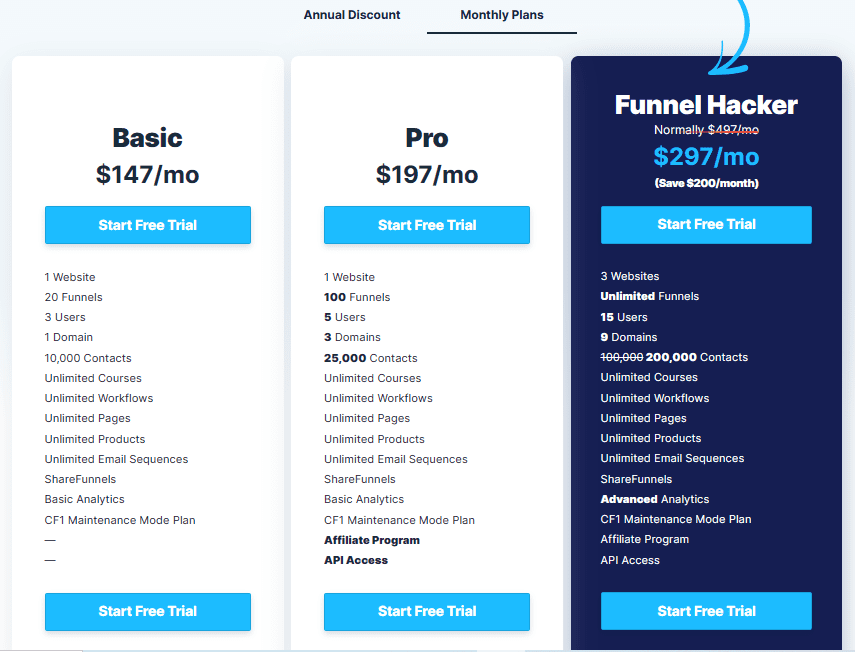

Pros And Cons:
Instapage:
Pros:
Cons:
ClickFunnels:
Pros:
Cons:
Pro Tip:
Final Thoughts/Recommendations:
Both Instapage and ClickFunnels are powerful platforms that offer a variety of features to help businesses create high-converting landing pages and sales funnels. However, the best platform for your business will depend on your specific needs and goals.
If your primary goal is to create high-converting landing pages, Instapage may be a better fit for your needs. Instapage offers a powerful drag-and-drop builder, customizable templates, advanced analytics, and integrations with a variety of third-party platforms.
On the other hand, if your primary goal is to build and manage sales funnels, ClickFunnels may be the better choice for you. ClickFunnels is an all-in-one marketing platform that offers a range of features, such as email autoresponders, one-click upsells and downsells, and funnel automation.
Regarding pricing, ClickFunnels offers more choices for those with budgetary constraints.
Ultimately, both Instapage and ClickFunnels are powerful platforms that can help businesses create high-converting landing pages and sales funnels. It’s always a good idea to evaluate your specific needs and choose the platform that best meets your requirements.
Related Articles:
FAQ:
Q: What is a cheaper alternative to ClickFunnels?
A: Systeme.io is a FREE ClickFunnels alternative with more features. Check out the FREE VERSION FOREVER.
Q: Is Instapage worth it?
A: The value of Instapage depends on your specific marketing needs and budget, so it’s essential to assess its features and pricing in relation to your goals before deciding if it’s worth it for your business.
Q: What is Instapage used for?
A: Instapage is primarily used as a landing page builder and optimization platform that helps businesses create, customize, and optimize landing pages for various marketing campaigns and lead-generation efforts.
Q: Is a sales funnel better than a website?
A: A sales funnel and a website serve different purposes, with websites offering comprehensive online presence and information, while sales funnels are focused on guiding specific conversions, so the choice depends on your specific business goals and needs.
Reference:

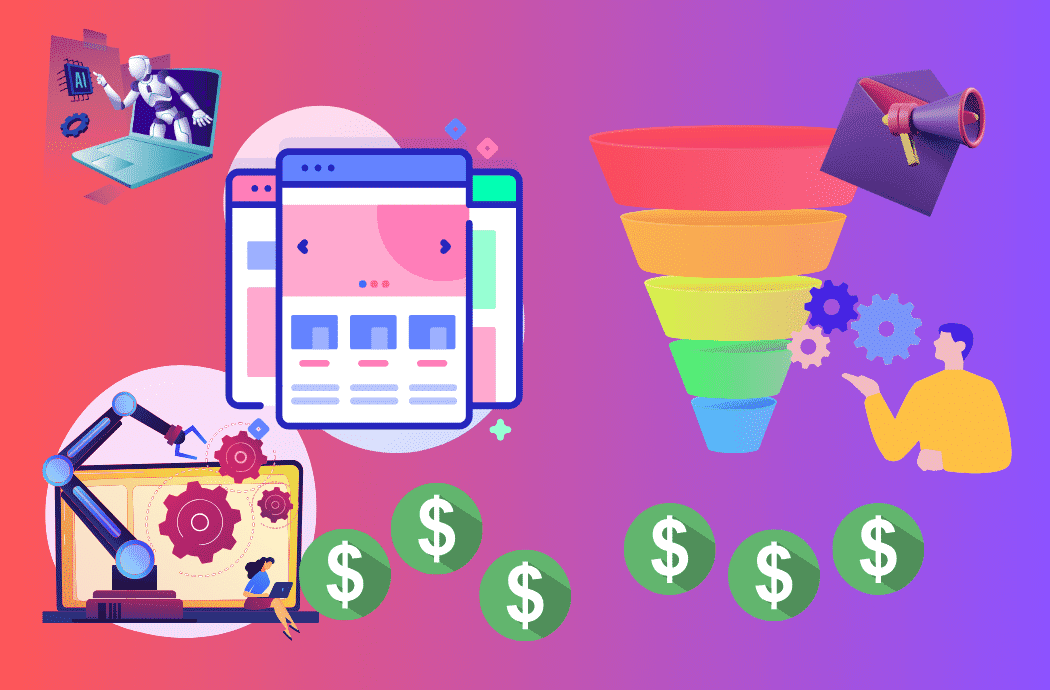

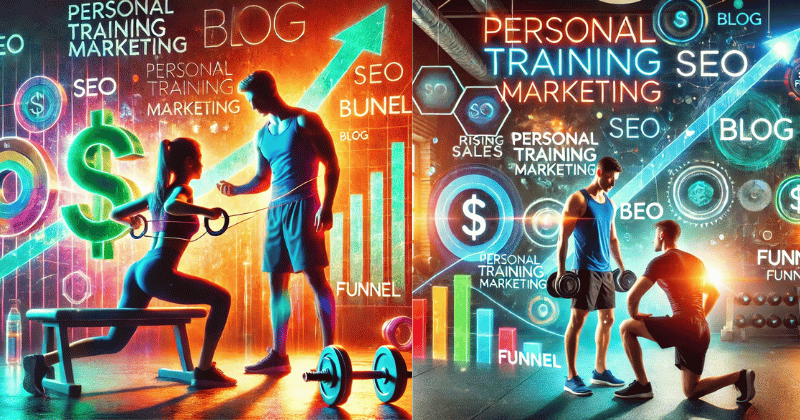
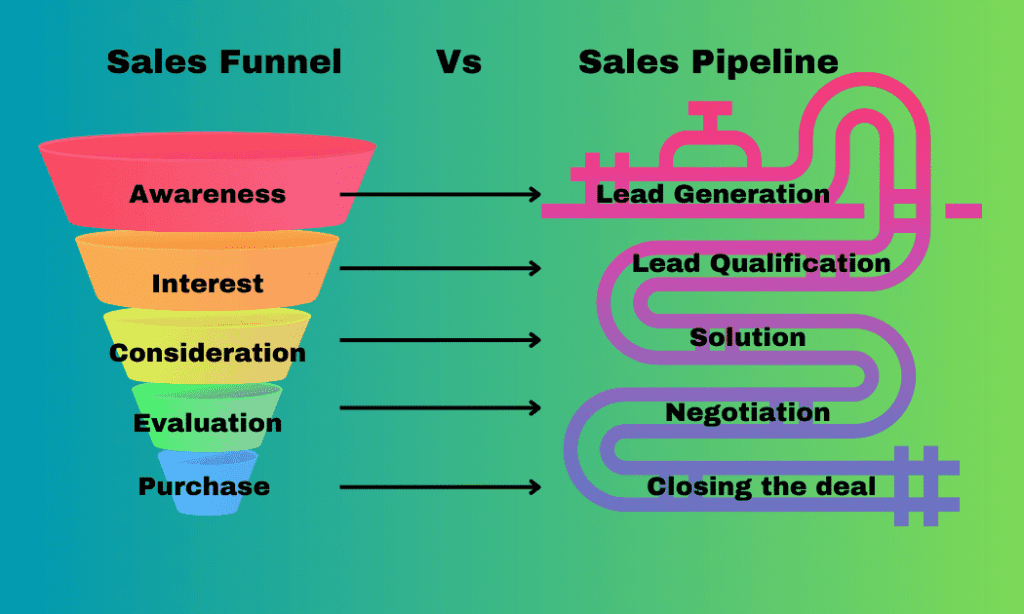





Wonderful blog! Do you have any tips and hints for aspiring writers? I’m hoping to start my own blog soon but I’m a little lost on everything. Would you suggest starting with a free platform like WordPress or go for a paid option? There are so many options out there that I’m completely overwhelmed .. Any ideas? Cheers!
Try Systeme.io> Link: https://systeme.io/?sa=sa00712884763c9ce7bd5d26f40d08bbfe7eb944d1. You can sign-up for their free account. It is easy to create a blog website with their drag and drop builder. You can learn about the platform with their free certification course (Link: https://systeme.io/certification?sa=sa00712884763c9ce7bd5d26f40d08bbfe7eb944d1)